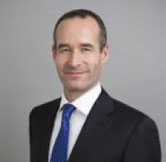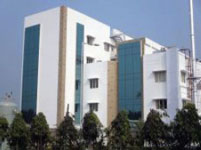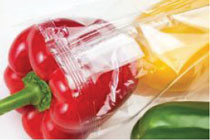Also, download this story from the electronic issue here

Globally active chemical company Wacker Chemie posted a solid first quarter sales for 2014, led by growth in the Asian region. For the current year, the Munich-based firm expects EBIDTA to climb 10% above the prior-year figure of EUR679 million.
Wacker owes this positive forecast to sales of its silicones and to Asia’s higher standards of living. Sales in Asia shot up by 13% to EUR490.2 million. By 2017, Wacker expects to hit a global sales target of EUR6.5 billion.
According to Dr Tobias Ohler, Wacker Executive Board, in 2013, Wacker generated EUR1.83 billion or 40% of its sales in Asia, with China accounting for 58% of this. Speaking at the company’s recent media briefing in Burghausen, to commemorate Wacker’s centennial history, Ohler said the region is shown to provide the largest overall growth compared to US and Europe.
To take advantage of the burgeoning middle class and changing consumer habits, Wacker is looking at Southeast Asia’s economic strength as a harbinger for the company’s regional growth.
Demand hike for chemicals
Asia is the largest manufacturer and consumer of chemicals and pharmaceutical products, with China as the largest single market for chemical products since 2009, according to Ohler’s presentation.
In 2012, of the total global consumption, major markets in Asia accounted for more than the combined consumption of the US and the EU. China alone accounted for 29%, followed by Japan and South Korea (9%) and the rest of the region (12%).
“The importance of developing economies as a chemical market is rising; there is high future growth potential in emerging countries,” he said. Again, China is expected to raise its chemical production by 8.8%, outpacing the global production increase at 3.8%, according to Wacker’s chemical production outlook for 2014.

Ohler said that Wacker’s products serve the global trends in aspects of urbanisation, energy, health, living comfort, saving resources and digitisation.
By 2025, 21 of the world’s 37 megacities will be in Asia; thus, electricity demand will double between 2010 and 2035. Investments for energy will climb US$11.7 trillion until 2035, Ohler said in his presentation.
Supplementing the energy requirements are Wacker’s silicone elastomer insulators, polymer dispersions, silicone sealants and adhesives.
With the growing population and longer life span, health awareness and self- indulgence are increasing, and thus improved medical treatment is required, and this can be served by Wacker’s biotech products.
Meanwhile, Wacker’s dispersible powders (external thermal insulation systems), hyperpure silicon and silicone encapsulants serve the requirement for more efficient heating of buildings; demand for solar power applications; as well as consumer electronics and smartphones.
Roots in Asia
Wacker has carved its market in Asia for more than 40 years now. The company has had its major “firsts” in Asia, too. For instance, in 1970, the firm started its first business activities in China. In 1983, it set up its first sales office in Tokyo. Its first joint venture, with Metroark, was the basis for its base in India in 1998. The following year, it entered into a joint venture with Asahi Kasei to produce silicones (fluids, emulsions, elastomers) for the automotive, chemical and rubber industries.

In 2000, the first regional technical centre was set-up in Shanghai, China, where the first production plant for silicone emulsions was also established in 2004. The following year, in 2005, it formed Wacker Dynamic Silicones in Shunde, in a joint venture with Dynamic Chemicals, to produce silicones (fluids, emulsions, elastomers) for the textile industry.
Wacker established its first production plant for dispersible polymer powders in Zhangjiagang, which is also the site of its first joint venture integrated production plant for siloxanes and fumed-silica set up in 2008. In the same year, it launched its 300-mm wafer fabrication joint venture facility in Singapore. In 2010, it acquired South Korean silicone sealants manufacturer Lucky Silicones.
To date, Wacker’s Asian footprint includes 25 sales offices, nine technical centres, four academy centres and nine production plants in various locations across 11 Asian countries.
Its network includes Bangladesh, India, Japan, Singapore, Indonesia, China, South Korea, Taiwan, Thailand, Vietnam, and the Philippines, where it recently opened a sales office to distribute products of the chemical business divisions.
(PRA)



















